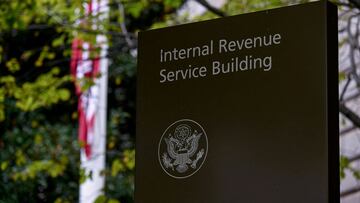IRS tax payment: How does it work, interest rate and how to set it up
Taxes are due Tuesday 18 April in the United States. Failure to pay can bring penalties but the IRS offers payment plans for those short on cash.

The Internal Revenue Service is expecting US taxpayers to submit their 2022 income tax returns and pay any taxes due by Tuesday 18 April. Those that can’t make the filing date can apply for a six-month extension, the agency has given certain taxpayers affected by natural disasters an automatic extension.
However, if not otherwise stated by the IRS any unpaid taxes must be paid by 18 April. Not everyone though might be able to settle their debt with the tax agency. For that reason the IRS has a series of payment plan options that taxpayers can apply for.
The IRS offers several payment methods including directly from your checking or savings account, by check, money order or debit and credit card. The last of those options though, paying by card, will incur a convenience service fee. Keep in mind that some limitations may be imposed depending on the payment type, the amount as well as form and tax year for which it is being made.
Looking for simple ways to make electronic payments to #IRS? Visit https://t.co/D6gSHvlDwX pic.twitter.com/9dyJQjCB5A
— IRSnews (@IRSnews) April 16, 2023
IRS tax payment: Pay Now
The best thing you can do is pay all of your outstanding balance to the IRS by Tax Day. Shocker, it’s free except for the taxes you owe but you also avoid any future penalties or interest accumulating. For the second quarter of 2023, April to June the interest rate is 7 percent for underpayments for corporate and non-corporate filers.
IRS tax payment: Short-term Payment Plan (180 days or less)
The second option you have is paying the full amount but at a later date. Under a short-term payment plan, the IRS will give you 180 days to pull the money together that you owe and pay off your debt.
While there is no cost to set up this type of agreement, interest and any applicable penalties will continue to accrue until you’ve paid your tax liability in full. You can only use this option if you owe less than $100,000 in combined tax, penalties and interest.
You can apply online using the IRS Online Payment Agreement (OPA) application or by calling the agency at 800-829-1040 which is only available to individuals, including sole proprietors and independent contractors, but not companies.
The IRS will immediately notify you after you’ve completed the online application on whether or not your payment plan has been approved.
Remember: An extension to FILE isn’t an extension to PAY. https://t.co/MgVpkMcZGI #IRSTaxTip pic.twitter.com/QI1xn4XkOy
— IRSnews (@IRSnews) April 14, 2023
IRS tax payment: Long-term payment plan (installment agreement)
The third option is paying back the IRS in monthly installments over the long term that can be either automatically withdrawn from your bank account or paid another way. In order to be eligible for this option, you must owe no more than $50,000 in combined tax, penalties and interest, and have filed all required returns.
Using the direct debit version, where payments are taken directly out of your bank account, will cost $31 to set up but the fee may be waived if you meet the low income requirements stated as having income less than 250 percent of the federal poverty level. If your outstanding debt to the IRS exceeds $25,000 you’ll only have the option of paying via Direct Debit.
Should you choose another method of payment the fee jumps to $130, for low income applicants it is only $43 and may be reimbursed if you meet certain conditions.
Keep in mind that interest and any applicable penalties will continue to accrue until you’ve paid your tax liability in full with either of these payment plans.
Related stories
Again, the IRS will immediately notify you after you’ve completed the online application on whether or not your payment plan has been approved.
The IRS gives more detailed information in their Topic No. 202 explainer on tax payment options.


